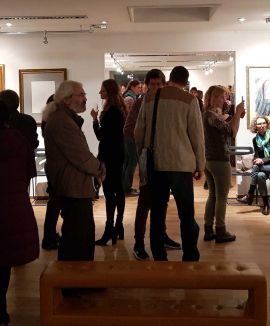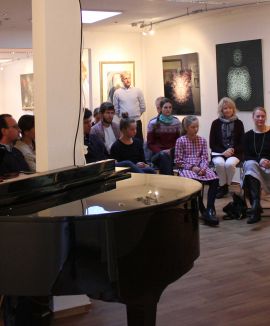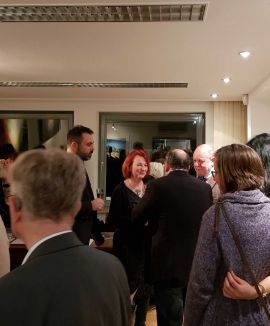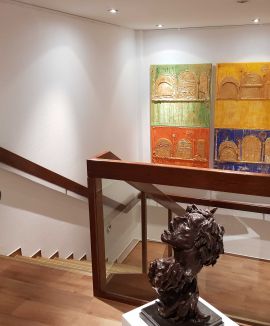Harmonie at Pashmin Art Gallery Hamburg
From 20.11.2017 to 08.01.2018, Pashmin Art Gallery Hamburg presents some selected works at the exhibition entitled "Harmonie". The exhibition opened on 18.11.2017 by Mr. Nour Nouri with the first presentation of the “Light Organ” in Europe by Svetoslav Karparov and the Werkstatt Atmani. Roughly at the same time, another exhibition titled “Harmony” is held in Pashmin Art Gallery Shanghai, where the light organ has already gained great popularity. The following is an excerpt from Ms. Zahra Hasson's Opening Speech in Hamburg: "The selected exhibits have been put together in such a way that they have been adjusted to an even dimension and still retain their identity as individual works, thus surprising and delighting the beholder at the same time. The exhibition's goal is not only to visualize the similarities in art, but also to make them tangible with all the senses. Thus, the works face each other in an ideal relationship, mostly with the respective idea, idea of symmetry, proportions, material, technique and implementation. Each of the artists exhibited here manages to create his or her own harmony in the image or to visually translate the idea of harmony into reality."
For more than 25 years, Pashmin Art Gallery Hamburg has championed the exchange between China and Europe, between West and East. The artists whose works were shown in the last gallery exhibition of the year 2017, were already represented in the MoCA Beijing, China. However, this gallery exhibition is not internationally the last exhibition of 2017 of Pashmin Art Gallery. On the 16th of December 2017 the opening of the museum exhibition "Recognition of New Artistic Voices in Kunming" will take place in China.
Below is an excerpt from the opening speech of 18.11.2017 by Dr. Peter Schütt on the Chinese art market: "China is now the decisive global player in the global art market. Nearly half of the turnover in international art trade is now going to China. But Chinese art dealers are not just looking for contemporary Western art, they are also collecting East Asian art. These are usually masterpieces of traditional Chinese art that were stolen by the Western powers in the era of colonialism and are now part of the foundations of many Western European ethnographic museums. The Chinese invest in art, on a large scale and on a large scale. They emphasize the value of art and the value added by artistic communication. The recent People's Congress, which convened in Beijing a few weeks ago, has decided to double government spending on education, culture and the arts and underlined the importance of international cultural exchange in the spirit of the Silk Road Strategy. The Silk Road, it says in the document, should not be a one-way street, but serve the reciprocal import and export of goods and values. China relies on dialogue, artistic and cultural exchange between West and East. "




